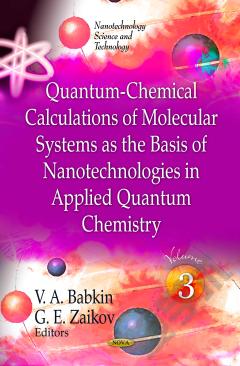Quantum Physics for Scientists and Technologists —— Fundamental Principles and Applications for Biologists, Chemists, Computer Scientists, and Nanotechnologists
----- 科学家与技术人员用量子物理学:生物学家、化学家、计算机科学家与纳米技术人员用量子物理学
Acknowledgments. About the Author. About the Tech Editor. Periodic Table of the Elements. Fundamental Physical Constants. Important Combinations of Physical Constants. Preface: Science, Technology, and Quantum Physics: Mind the Gap. 1 First, There Was Classical Physics. 1.1 Introduction. 1.2 Physics and Classical Physics. 1.3 The Classical World of Particles. 1.4 Physical Quantities. 1.5 Newton's Laws of Motion. 1.6 Rotational Motion. 1.7 Superposition and Collision of Particles. 1.8 Classical World of Waves. 1.9 Refl ection, Refraction, and Scattering. 1.10 Diffraction and Interference. 1.11 Equation of Wave Motion. 1.12 Light: Particle or Wave? 1.13 Understanding Electricity. 1.14 Understanding Magnetism. 1.15 Understanding Electromagnetism. 1.16 Maxwell's Equations. 1.17 Confi nement, Standing Waves, and Wavegroups. 1.18 Particles and Waves: The Big Picture. 1.19 The Four Fundamental Forces of Nature. 1.20 Unification: A Secret to Scientific and Technological Revolutions. 1.21 Special Theory of Relativity. 1.22 Classical Approach. 1.23 Summary. 1.24 Additional Problems. 2 Particle Behavior of Waves. 2.1 Introduction. 2.2 The Nature of Light: The Big Picture. 2.3 Black-Body Radiation. 2.4 The Photoelectric Effect. 2.5 X-Ray Diffraction. 2.6 The Compton Effect. 2.7 Living in the Quantum World. 2.8 Summary. 2.9 Additional Problems. 3 Wave Behavior of Particles. 3.1 Introduction. 3.2 Particles and Waves: The Big Picture. 3.3 The de Broglie Hypothesis. 3.4 Measuring the Wavelength of Electrons. 3.5 Quantum Confi nement. 3.6 The Uncertainty Principle. 3.7 Wave-Particle Duality of Nature. 3.8 Living in the Quantum World. 3.9 Summary. 3.10 Additional Problems. 4 Anatomy of an Atom. 4.1 Introduction. 4.2 Quantum Mechanics of an Atom: The Big Picture. 4.3 Dalton's Atomic Theory. 4.4 The Structure of an Atom. 4.5 The Classical Collapse of an Atom. 4.6 The Quantum Rescue. 4.7 Quantum Mechanics of an Atomic Structure. 4.8 Classical Physics or Quantum Physics: Which One Is the True Physics? 4.9 Living in the Quantum World. 4.10 Summary. 4.11 Additional Problems. 5 Principles and Formalism of Quantum Mechanics. 5.1 Introduction. 5.2 Here Comes Quantum Mechanics. 5.3 Wave Function: The Basic Building Block of Quantum Mechanics. 5.4 Operators: The Information Extractors. 5.5 Predicting the Measurements. 5.6 Put It All into an Equation. 5.7 Eigenfunctions and Eigenvalues. 5.8 Double Slit Experiment Revisited. 5.9 The Quantum Reality. 5.10 Living in the Quantum World. 5.11 Summary. 5.12 Additional Problems. 6 The Anatomy and Physiology of an Equation. 6.1 Introduction. 6.2 The Schrodinger Wave Equation. 6.3 The Schrodinger Equation for a Free Particle. 6.4 Schrodinger Equation for a Particle in a Box. 6.5 A Particle in a Three-Dimensional Box. 6.6 Harmonic Oscillator. 6.7 Understanding the Wave Functions of a Harmonic Oscillator. 6.8 Comparing Quantum Mechanical Oscillator with Classical Oscillator. 6.9 Living in the Quantum World. 6.10 Summary. 6.11 Additional Problems. 7 Quantum Mechanics of an Atom. 7.1 Introduction. 7.2 Applying the Schrodinger Equation to the Hydrogen Atom. 7.3 Solving the Schrodinger Equation for the Hydrogen Atom. 7.4 Finding the Electron. 7.5 Understanding the Quantum Numbers. 7.6 The Signifi cance of Hydrogen. 7.7 Living in the Quantum World. 7.8 Summary. 7.9 Additional Problems. 8 Quantum Mechanics of Many-Electron Atoms. 8.1 Introduction. 8.2 Two Challenges to Quantum Mechanics: The Periodic Table and the Zeeman Effect. 8.3 Introducing the Electron Spin. 8.4 Exclusion Principle. 8.5 Understanding the Atomic Structure. 8.6 Understanding the Physical Basis of the Periodic Table. 8.7 Completing the Story of Angular Momentum. 8.8 Understanding the Zeeman Effect. 8.9 Living in the Quantum World. 8.10 Summary. 8.11 Additional Problems. 9 Quantum Mechanics of Molecules. 9.1 Introduction. 9.2 A System of Molecules in Motion. 9.3 Bond: The Atomic Bond. 9.4 Diatomic Molecules. 9.5 Rotational States of Molecules. 9.6 Vibrational States of Molecules. 9.7 Combination of Rotations and Vibrations. 9.8 Electronic States of Molecules. 9.9 Living in the Quantum World. 9.10 Summary. 9.11 Additional Problems. 10 Statistical Quantum Mechanics. 10.1 Introduction. 10.2 Statistical Distributions. 10.3 Maxwell Boltzmann Distribution. 10.4 Molecular Systems with Quantum States. 10.5 Distribution of Vibrational Energies. 10.6 Distribution of Rotational Energies. 10.7 Distribution of Translational Energies. 10.8 Quantum Statistics of Distinguishable Particles: Putting It All Together. 10.9 Quantum Statistics of Indistinguishable Particles. 10.10 Planck s Radiation Formula. 10.11 Absorption, Emission, and Lasers. 10.12 Bose Einstein Condensation. 10.13 Living in the Quantum World. 10.14 Summary. 10.15 Additional Problems. 11 Quantum Mechanics: A Thread Runs through It all. 11.1 Introduction. 11.2 Nanoscience and Nanotechnology. 11.3 Nanoscale Quantum Confi nement of Matter. 11.4 Quick Overview of Microelectronics. 11.5 Quantum Computing. 11.6 Quantum Biology. 11.7 Exploring the Interface of Classical Mechanics and Quantum Mechanics. 11.8 Living in the Quantum World. 11.9 Summary. 11.10 Additional Problems. Bibliography. Index.
{{comment.content}}








 京公网安备 11010802027623号
京公网安备 11010802027623号